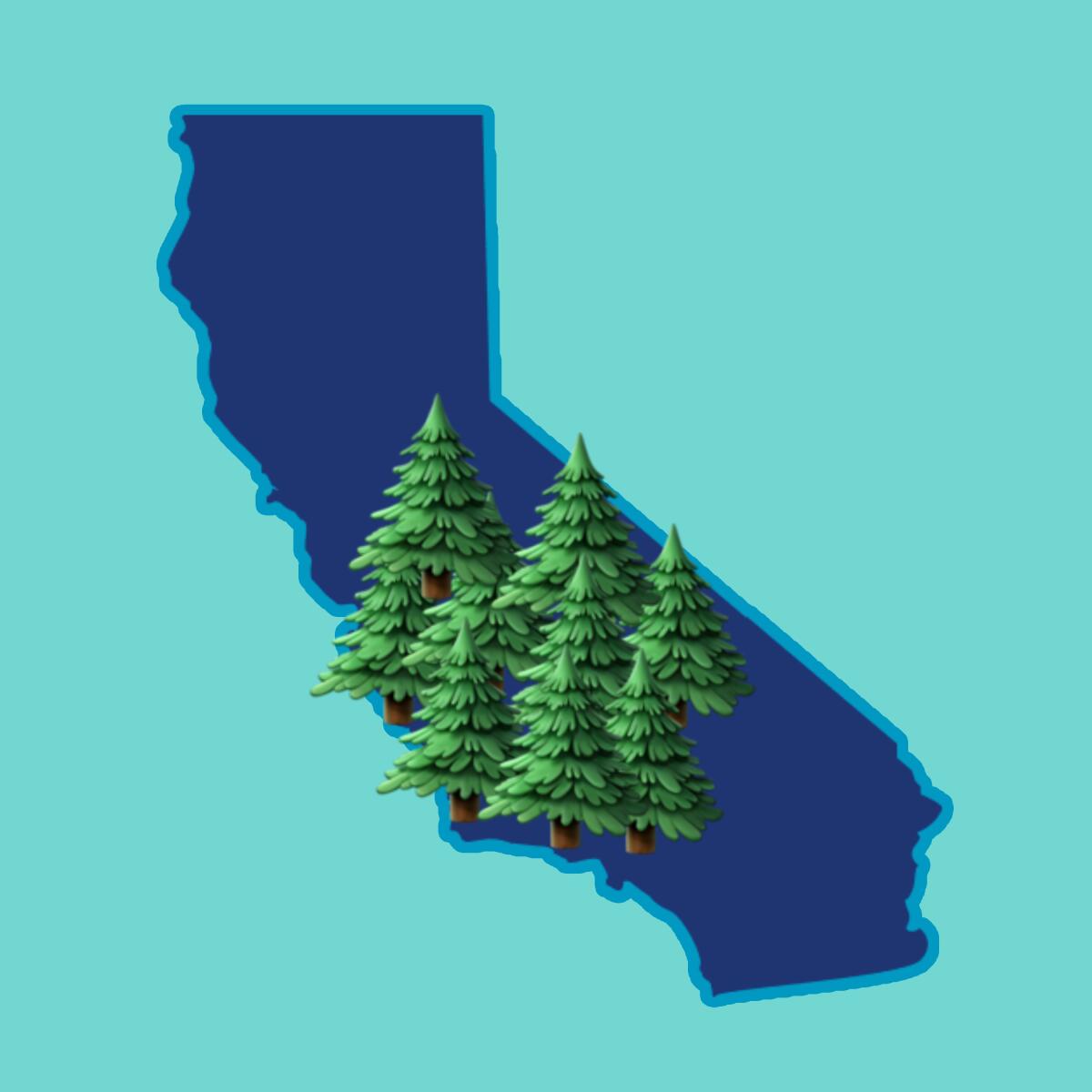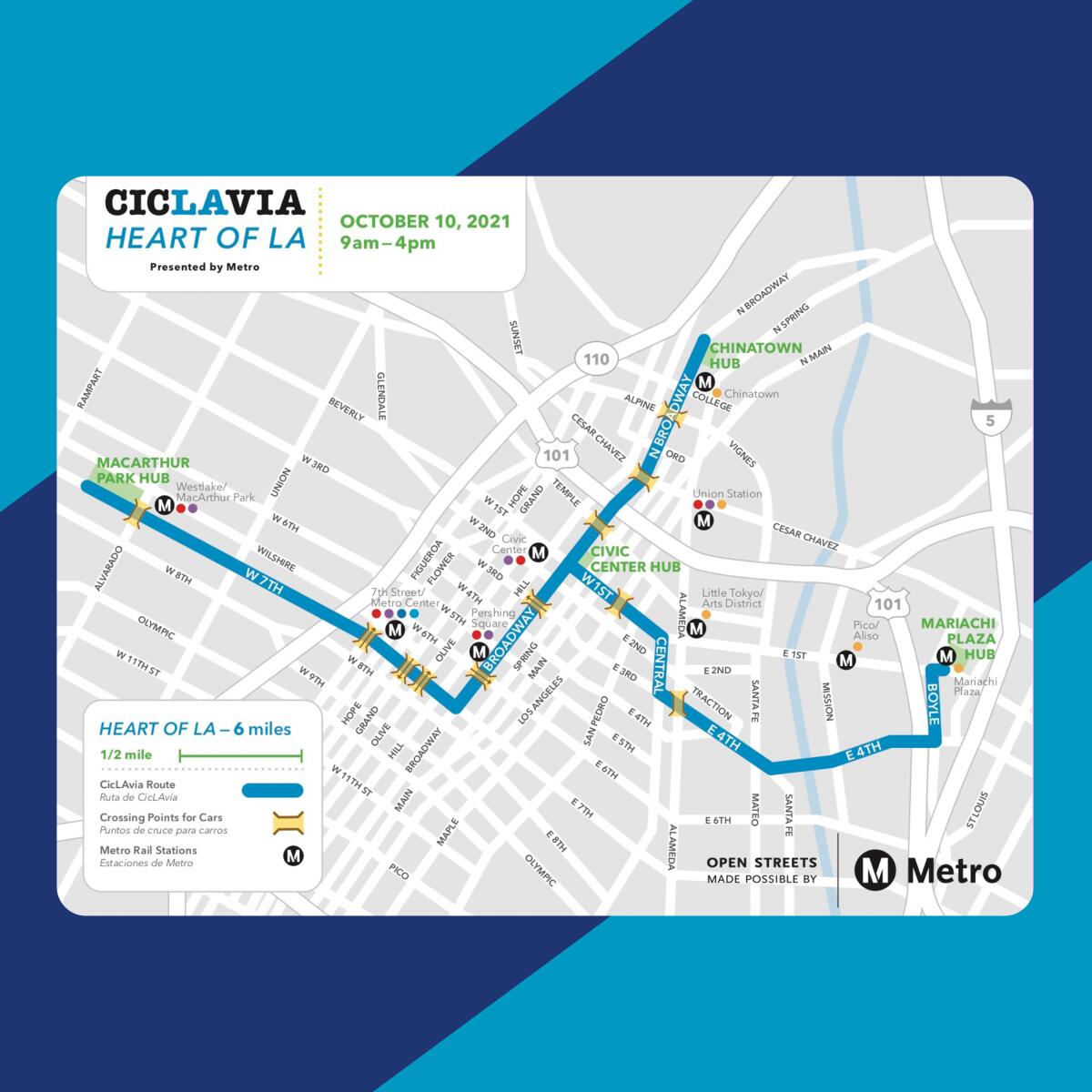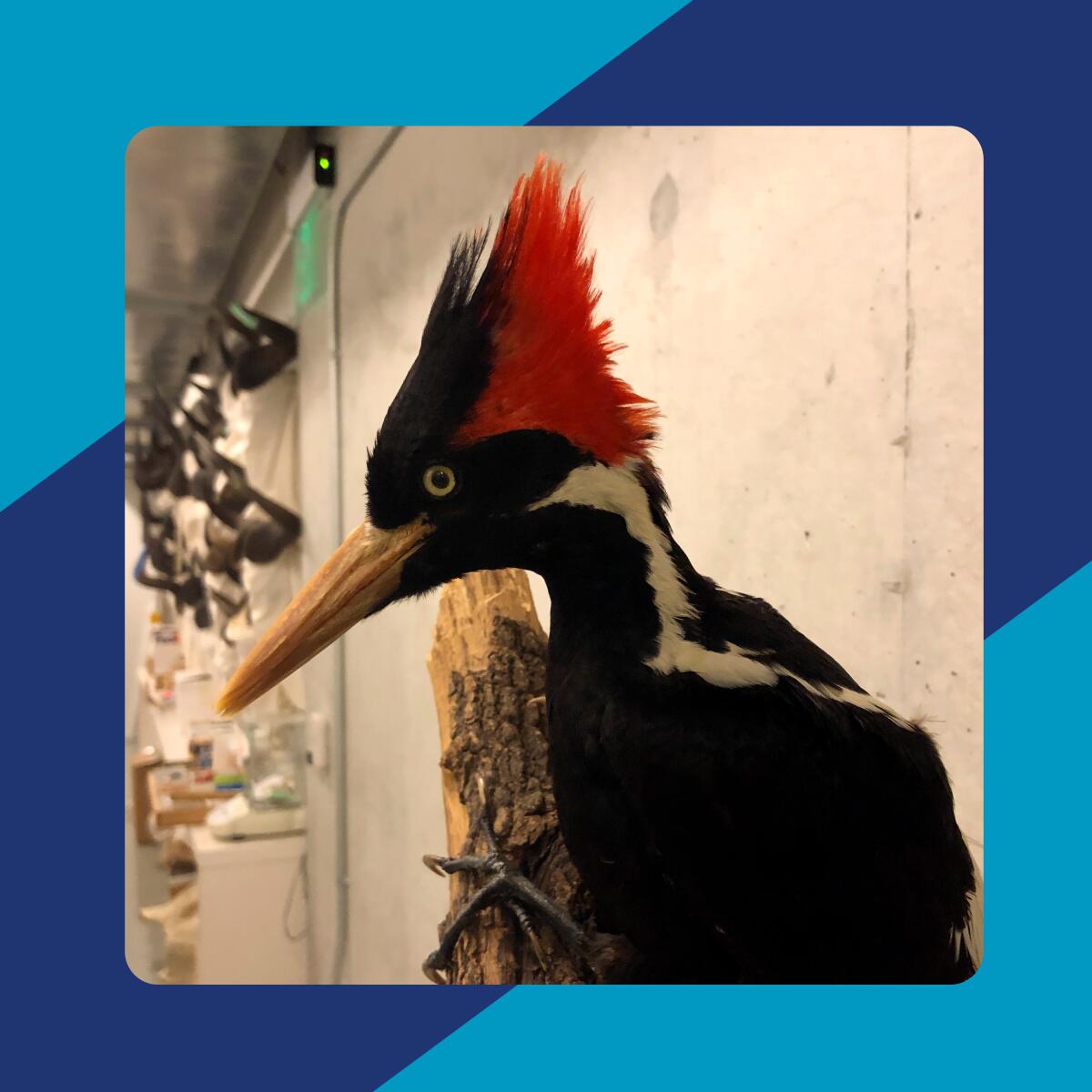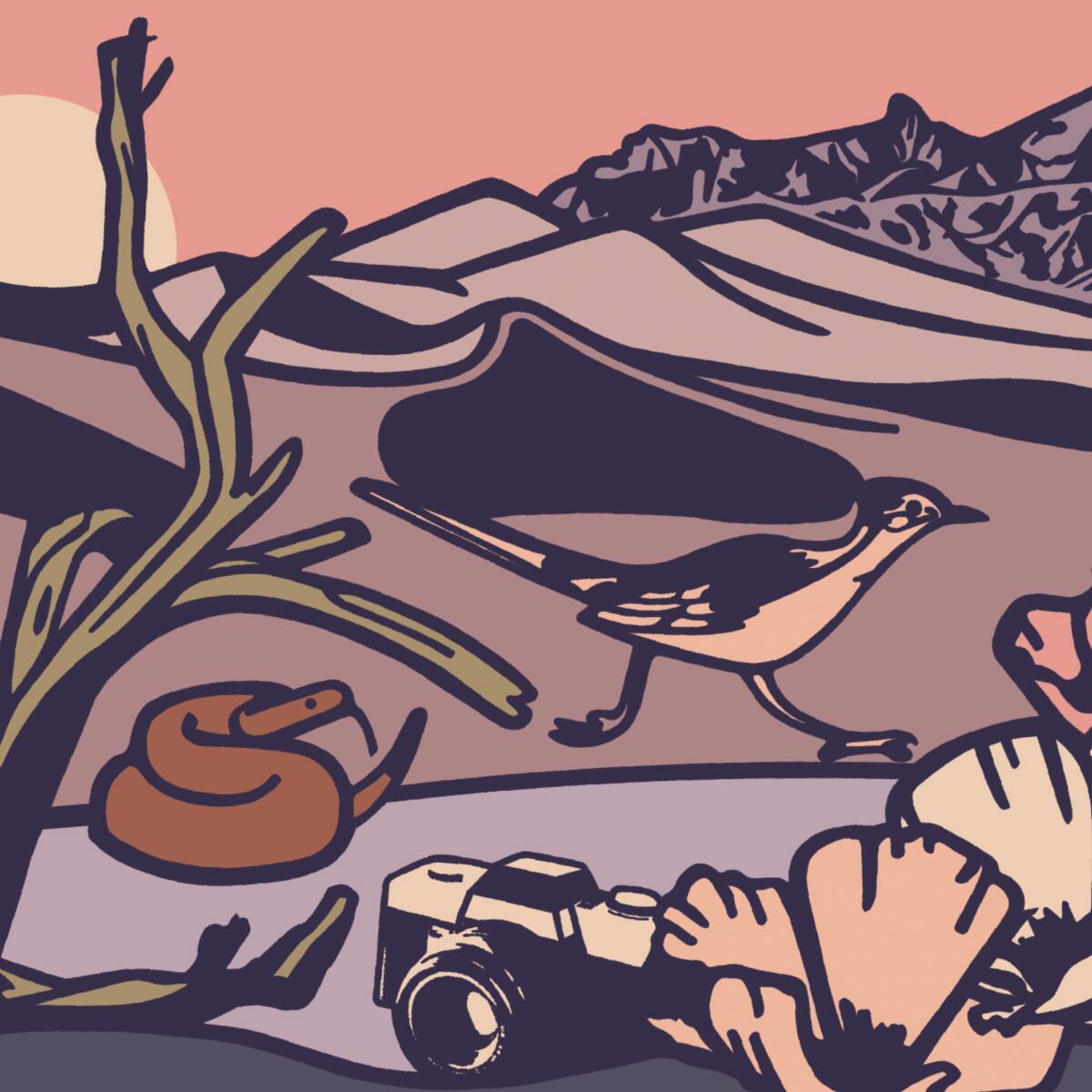Where to find L.A.’s newest micro forests

- Share via
How many trees does it take to make a forest? Not as many as you’d think at L.A.’s newest micro forests.
Last Saturday, 20 trees — including Brisbane box, tipa and blue jacaranda — were planted in a corner of Hollenbeck Park in Boyle Heights. These were no little saplings; trees 6 to 7 feet tall were planted to instantly provide a leafy shade canopy in a neighborhood where little shade exists.
The L.A. Park Forest Initiative, as it’s called, “was really inspired by the fact that so many of our parks desperately need more trees, especially the ones that are around the urban core of downtown,” said Carolyn Ramsay, executive director of the Los Angeles Parks Foundation.
Ramsay and others designed a plan to get mature trees into the ground and make sure they flourish. The initiative includes two years of deep watering every month and weed care. Tree species were selected for their ability to withstand heated-up temperatures due to climate change.
Take a firsthand look at the micro forests planted in these urban parks (and learn more here):
- Lemon Grove Park, 4959 Lemon Grove Ave., Hollywood
- Mar Vista Recreation Center, 11430 Woodbine Ave., Los Angeles
- Robert Burns Park, 4900 Beverly Blvd., Los Angeles
- Ross Snyder Recreation Area, 1501 E. 41st St., Los Angeles
3 things to do this week

1. Hypno-yoga in an L.A. cemetery — need we say more? L.A. can sometimes push the limit when it comes to wellness. “The reason why I blended Kundalini yoga with the hypnosis is that when you do this expanded breathwork, you alter your brainwave patterns into an alpha state, which replicates a mild hypnotic state,” practitioner Ellen Heuer said in an L.A. Times story. Hypno-yoga sessions each Wednesday at Hollywood Forever Cemetery (6000 Santa Monica Blvd. in L.A.) are open to all. Some who attend appreciate the setting. “It feels more powerful to be connected to spirit and spirits,” said participant Stefanie Carimati of Los Angeles. Classes from 8 to 9:15 a.m. are free, but donations are encouraged to fund local charities. More info here.

2. Come mark 10 years of CicLAvia’s car-free street parties. In 2010, about 100,000 people turned out for the first CicLAvia event in downtown L.A.. Now organizers plan to mark its 10-year birthday (events were canceled last year because of COVID-19) with a Heart of L.A. event from 9 a.m. to 4 p.m. Sunday. Bike, skate, run, walk, skateboard or just people-watch at the block party that will cover six miles, with hubs at Chinatown, Civic Center, Mariachi Plaza in Boyle Heights and MacArthur Park. Food trucks as well as exhibits and activities will be at each hub. Be prepared to wear a mask, which L.A. requires at gatherings of more than 10,000 people, and a helmet (if you are biking or skating). More info here.

3. Learn about the farm animal sanctuary movement — and visit a site near L.A. Farm Sanctuary started 35 years ago to raise awareness about the treatment of farm animals and to promote “cruelty-free, plant-based living.” “The Power of Sanctuary” virtual event celebrates the organization’s decades of working for a food system that shows compassion for animals. Register here for the free event at 4 p.m. Pacific time Saturday. Want to take a guided tour to see animals at the farm in Acton, about 50 miles from downtown L.A.? Sign up here ($10 for adults, $5 for children 4 to 12).
Wild things

Among certain birders, nothing has been more relentlessly sought after than the ivory-billed woodpecker. Now the hunt is over. The bird, largest in the woodpecker family, was recently declared extinct, along with 22 other species. “The woodpecker went out stubbornly and with fanfare, making unconfirmed appearances in recent decades that ignited a frenzy of ultimately fruitless searches in the swamps of Arkansas, Louisiana, Mississippi and Florida,” the Associated Press reported. Eight birds native to Hawaii, two small fish, some species of mussels and others joined the list of creatures deemed extinct by the U.S. Fish and Wildlife Service.
The red flag

The large oil spill off Orange County spread about 144,000 gallons of crude from an oil pipeline — and raised questions about when residents were warned about the problem. “California and federal officials had strong indications of oil on the water off the Huntington Beach coast Friday evening, records reviewed by The Times show, more than 10 hours before the operator of an oil platform reported it to authorities,” an L.A. Times story said.
The must-read

Animal lovers beware: Not all kittens you foster will make it. Still, there are compelling reasons to dive in anyway. Columnist David Lazarus wrote a story about the ups and downs: “Fostering baby animals is hard, I won’t sugarcoat it. You may be awake much of the night handling feedings. There’ll be messes. You’re constantly watching to make sure the little one isn’t underfoot or in danger. But every little milestone — first feeding, first step, first poop — is a tiny act of grace in an otherwise jaded world.” Check out the adorable photos and the full story here.
P.S.

Author Toni Morrison once wrote: “At some point in life the world’s beauty becomes enough. You don’t need to photograph, paint, or even remember it. It is enough.” Linnea Bullion can relate, especially after a prized camera broke when she was in Death Valley trying to heal her broken life. She wrote an L.A. Affairs essay for the L.A. Times about the loss of a life-changing relationship and the loss of the camera: “Not everything can be saved, and sometimes you need three days alone in the desert to remind you of that fact.” Read about her desert journey to heal here.
It’s official! A California state park formerly known as Patrick’s Point in Humboldt County will be renamed Sue-meg after the Indigenous Yurok tribe name for the area. The change is the first renaming of a California park as part of an initiative to identify and rectify derogatory names attached to state parks and transportation systems. Read the full story here.
Send us your thoughts
Share anything that’s on your mind. The Wild is written for you and delivered to your inbox for free. Drop us a line at TheWild@latimes.com.
Click to view the web version of this newsletter and share it with others, and sign up to have it sent weekly to your inbox. I’m Mary Forgione, and I write The Wild. I’ve been exploring trails and open spaces in Southern California for four decades.

- Share via
Watch L.A. Times Today at 7 p.m. on Spectrum News 1 on Channel 1 or live stream on the Spectrum News App. Palos Verdes Peninsula and Orange County viewers can watch on Cox Systems on channel 99.
Sign up for The Wild
We’ll help you find the best places to hike, bike and run, as well as the perfect silent spots for meditation and yoga.
You may occasionally receive promotional content from the Los Angeles Times.





